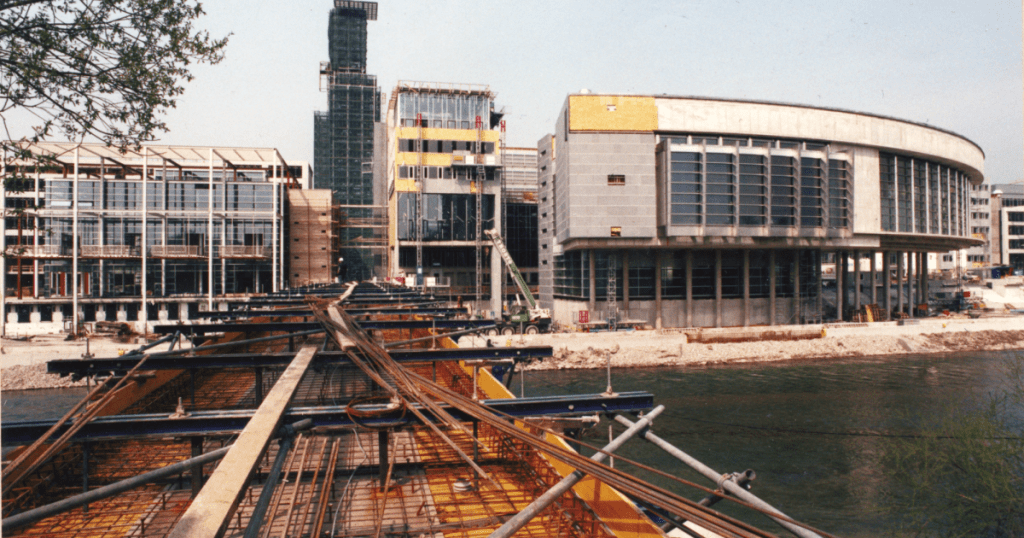At first there was great skepticism about vision, even in the ranks of the ÖVP. Nor did the alliance partner, SPÖ, simply indicate approval. Ludwig and Karl Gruber, then a member of the state parliament and brother of the red mayor of St. Polten, were agonized and promoted the idea.
With the referendum that took place on the first and second of March 1986, a development began that ended with the largest transfer of a home to a federal state. Its motto: A country without a capital is like a goulash without juice…”
Resolution in 30 minutes
The appointment of the management of the capital planning company (NÖPLAN) was the subject of the government meeting scheduled for only 30 minutes. Then Ludwig declared: “It’s over. So it makes me a beautiful capital.” Norbert Steiner, who worked as a city planner in Munich until 1987, was brought to St. Polten.
He remembers: “The nice thing is that nothing is predetermined, there is no firmware. You get a scheme job like this once in every generation.” Initially, three sites were targeted. On the River Traisen, the lower Austrian military command area and at Stattersdorf opposite the Lilienhof.
“Mole historians” were on duty in time before the groundbreaking ceremony: archaeologists from the Federal Archaeological Office dug ten-meter-wide “search holes”, but no great finds were made in the Stone Age settlements. In the county government’s urban planning considerations, the issue of urbanization and the development of Old St. Polten was the main focus. Ernst Hoffmann’s design corresponds best with this.
When Norbert Steiner, Robert Sega and Peter Huss submitted the plans to the authorities, they already had a masterpiece behind them: more than 5,000 linear meters of paper with 550 floor plans for 16 homes, as well as about 1,000 pages of building specifications. And then there it was, the building permit: seven months after it was submitted, five years after the historic capital’s decision. The city planners also praised: “With the former building managers of St. Polten, the municipal authorities have been good partners in the formalities.”
musicians playing
The path to the memorable groundbreaking ceremony on September 13, 1992 was clear. 15,000 brass band musicians from Lower Austria played as the historian led the “Father of the Capital” to the middle of the former racetrack’s stadium. On each hand are two children from quarters of the country, each holding a brick. When the spade dug into the ground, more than 1,000 blue and yellow balloons appeared and fluttered widely.
In November 1996, the first phase of the construction of the Landhausviertel was finally opened, and in September the first 600 civil servants moved from Vienna to St. Polten. “Landhaus-Boulevard has proven to be a failure,” says the historian. “The officers didn’t really take advantage of the shopping opportunities.” And: “Initially, Klangturm was a teacher and viewing platform. A work of art with the three spherical ‘sound boxes’. But years later, the state’s Department of Culture shut down its operations – allegedly for lack of interest.”
The climax of the Pope’s visit was in June 1998. Peter Bellica: “Everything has been thought through. There was a bowl behind the platform for washing, changing and resting. Connected to another container equipped as an emergency operating room and a landing platform for the emergency doctor’s helicopter. “
facts
government area (or country house area)
1986 After a referendum, St. Pölten became the regional capital of Lower Austria.
1992 The groundbreaking ceremony takes place during the reign of Governor Siegfried Ludwig.
1997 After completing most of the components, the entire state administration was able to move to Traisen.
1998 The cultural district is completed with the Klangturm, Festspielhaus and the Niederösterreich Museum.
All the news from St. Polten every Monday in the mailbox with the KURIER St. Polten Newsletter:

“Food practitioner. Bacon guru. Infuriatingly humble zombie enthusiast. Total student.”








More Stories
Kyiv: Russian Kursk offensive halted
US Presidential Election: Former US Government Officials Warn Against Donald Trump's Election
Netherlands wants to leave asylum system